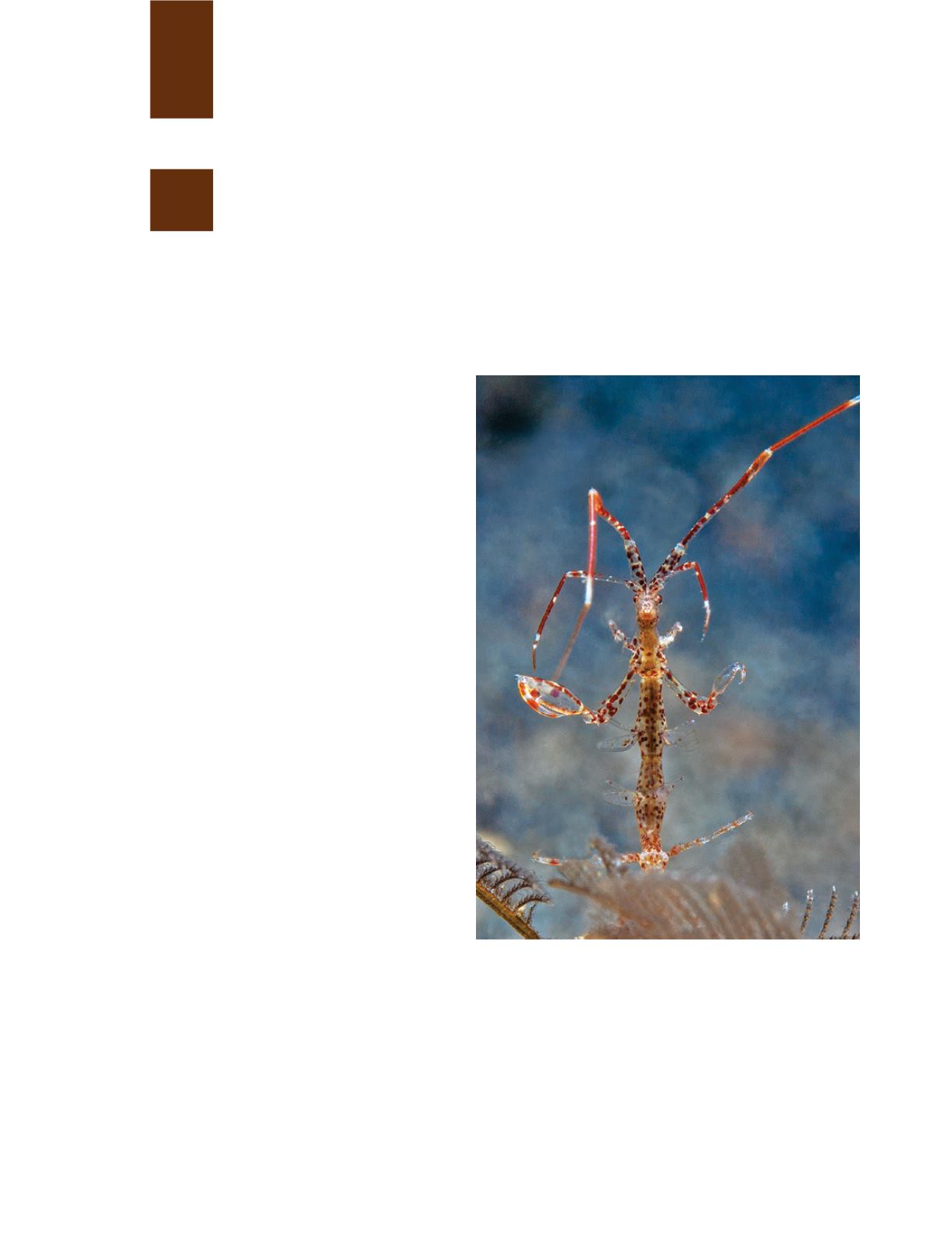
S
quinting, I can just make out individual skeleton
shrimp clinging to a hydroid bush. They are
part of a colony of hundreds, with the largest
measuring no more than a half-inch long.
Knowing that Anna shares my appreciation for such weird
creatures, I motion her over, and we settle in for a stay.
There’s little wonder we are so captivated. Skeleton
shrimp are oddities with attitudes, appearing both primitive
and futuristic, toylike and menacing at the same time. Think
of a thousand praying mantises in miniature or, better yet,
straw-thin robots on speed armed with claws that would
make a lobster envious.
The first to catch our eye are the larger males stampeding
through the colony like motorized inchworms looking for
someone to wallop. But underlings don’t cower from such
bullying; they strike back with a whirlwind of blows. Without
question, if skeleton shrimp were quadruple their size they
would rank among the most popular attractions in the sea.
Everything about skeleton shrimp is unconventional. For
starters, they are not shrimp at all. They belong to an entirely
different order of crustaceans, amphipods, but they don’t really
resemble others of that lineage either. In fact, their peculiar
morphology doesn’t fit comfortably anywhere. You have to
burrow deep into their classification, passing through suborder,
infraorder and something called the parvorder before you
finally arrive at family Caprellidae, into which a head-scratching
taxonomist back in the 1800s stuck them along with whale lice,
which bear little resemblance to their supposed next of kin.
Although skeleton shrimp are tiny and inconspicuous,
divers willing to make the effort can usually track them
down. They inhabit most inshore waters around the world.
During the summer, they can be prolific in seagrass and
on dock pilings and mooring lines along both coasts of the
United States and into Canada. In Indonesia we typically
find them on hydroids, sponges, gorgonians and algae,
but they occasionally gather in unexpected places. In the
Gulf of California we found them living on the heads of
scorpionfish, and we have heard tales of them taking up
residence on frogfishes, sea stars and nudibranchs.
Wherever there are colonies, there are big males controlling
the high ground, where the hunting is best. The shrimps’
primary prey is a tiny crustacean they pluck from the
currents with their claws, but if given the opportunity they
won’t hesitate to tackle bigger game. One night Anna’s
video lights attracted a whirlwind of planktonic worms to
a colony she was photographing. In the blaze of her beam,
a male skeleton shrimp snagged a worm several times its
30
|
FALL 2013
Above: Skeleton shrimp portrait.
Right: Skeleton shrimp mothers carry their young until
they are ready to fend for themselves.
ENCOUNTERS
Tough Neighborhood
T E X T A N D P H O T O S B Y N E D A N D A N N A D
e
L O A C H


